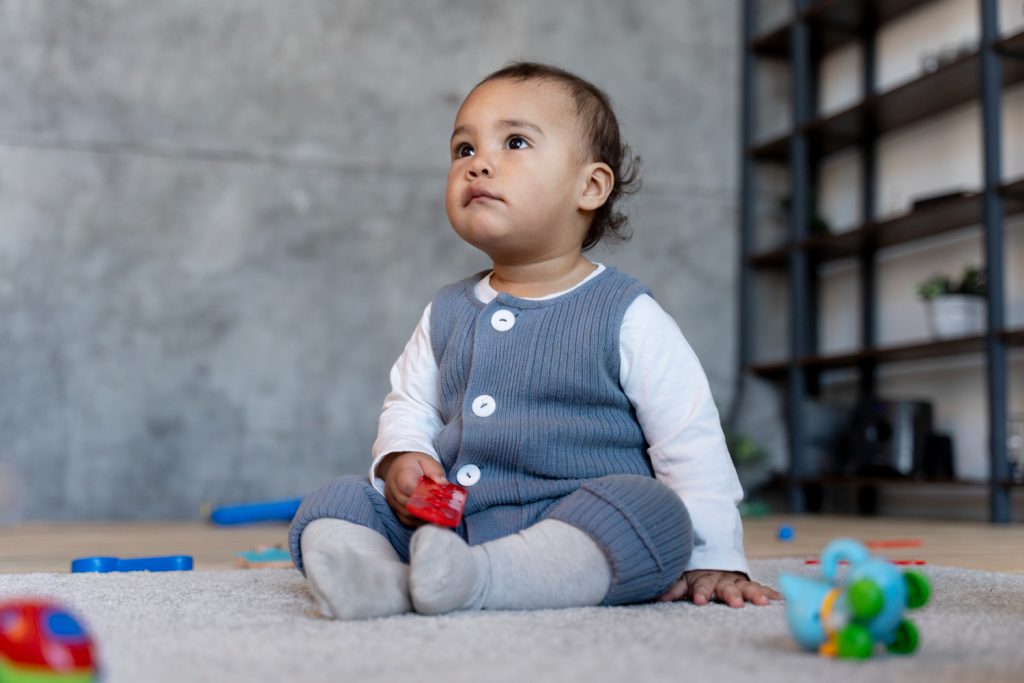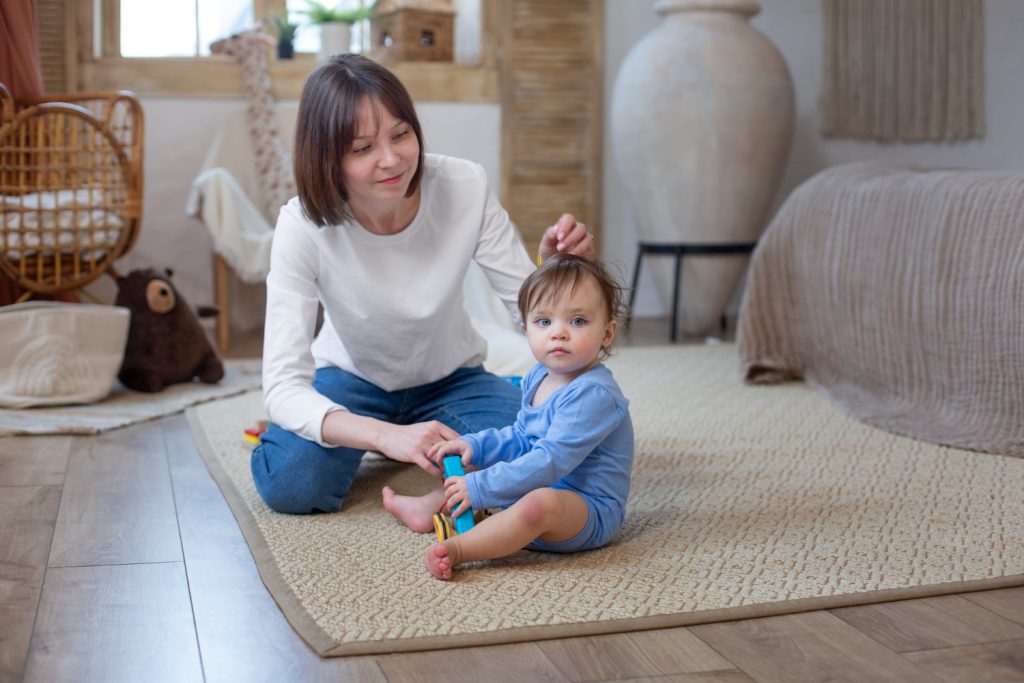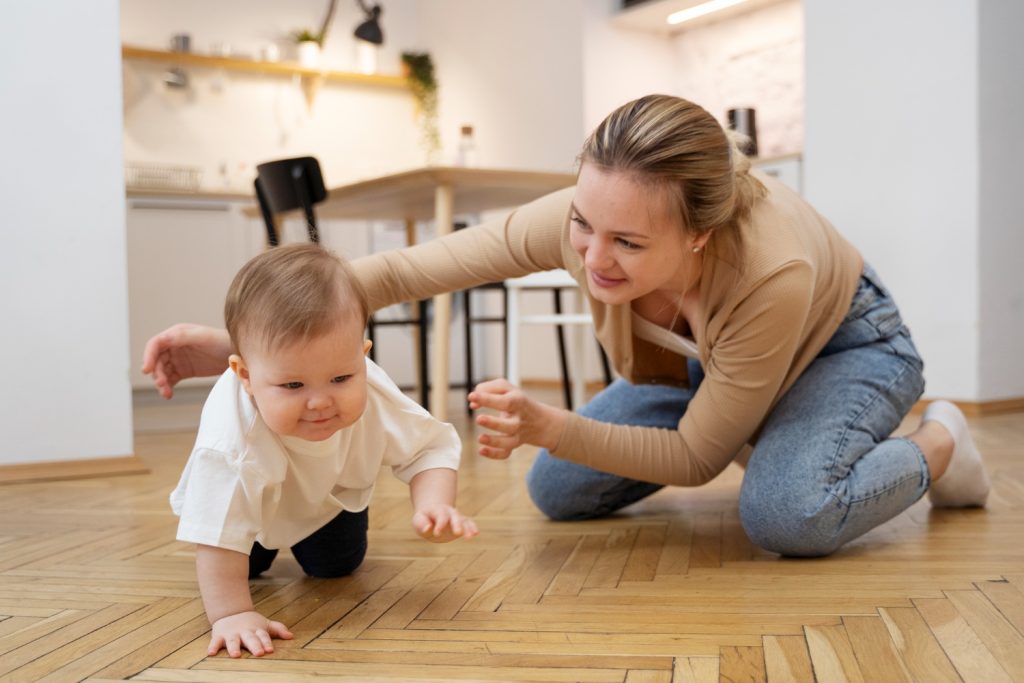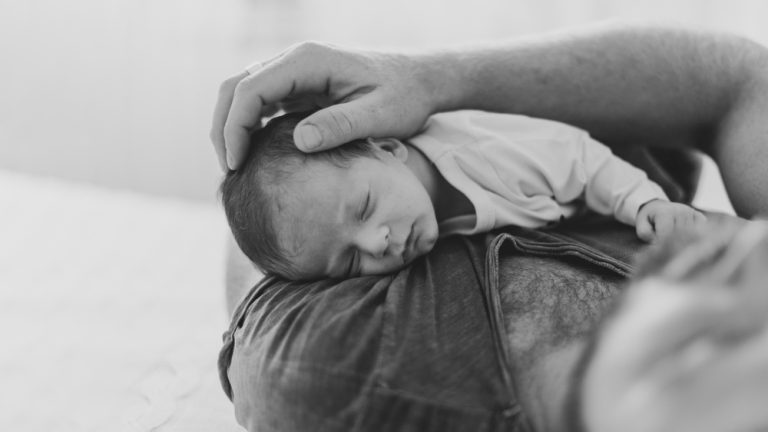When Are Babies Able To Sit Up? Baby Development Milestones
When are babies able to sit up, you may wonder? Have you ever marveled at a baby sitting up on their own for the first time, their eyes sparkling with newfound independence and curiosity? Witnessing your little one achieve the milestone of sitting up is a joyous moment that marks a significant step in their development journey.
As a parent, you may have questions about when this milestone typically occurs and how you can support your baby’s progress along the way.
In our comprehensive guide, we delve into the world of baby development milestones, focusing on the pivotal achievement of when are babies able to sit up. From understanding the signs that indicate your baby is ready to start sitting up to exploring tips and strategies to encourage their motor skills, we equip you with the knowledge and insights you need to nurture your little one’s growth.
Join us as we navigate the fascinating realm of infant development, sharing valuable information on sitting milestones, safety considerations, and related developmental markers.
Discover the wonders of your baby’s journey toward independence and learn how you can be a supportive guide along the way. Let’s undertake this enriching exploration of baby development together.
Significance Of When Are Babies Able To Sit Up

Babies grow and develop rapidly during their first year of life, achieving various milestones that mark their progress. These developmental milestones are important indicators of a baby’s physical and cognitive growth. One significant milestone that parents eagerly anticipate is when are babies able to sit up.
Sitting up is a crucial motor skill that strengthens a baby’s core muscles, balance, and coordination. It allows babies to explore their surroundings from a new perspective and opens up a whole new world of possibilities for interaction and play.
As babies master sitting up, they gain better control over their upper body and gradually develop the stability to maintain an upright position. This achievement is a foundation for further milestones like crawling, standing, and walking.
While each baby develops at their own pace, most typically start sitting up between the ages of four and seven months. It’s important to note that premature babies may have slightly delayed milestones compared to full-term babies. However, occasional variations in timing are normal, and it’s essential to remember that every child is unique.
By understanding the significance of developmental milestones like sitting up, parents can support their baby’s growth journey and provide the necessary environment for their continued progress. Let’s explore the signs that indicate when are babies able to sit up and the strategies to assist them in this exciting milestone.
Signs That Indicate A Baby Is Ready To Sit Up

Babies gradually acquire the skills needed to reach various milestones as they grow and develop. Sitting up independently is a significant achievement in their journey, and several signs can indicate when a baby is ready to venture on this exciting new stage.
Physical readiness
- Head control
Before babies can sit up independently, they need to have good control over their heads and neck. This means holding their head steady while in an upright position. Look for signs that your baby can hold their head up for extended periods without support.
- Upper body strength
Sit-up readiness also involves having sufficient upper body strength. Watch for signs that your baby is starting to push up on their arms during tummy time or while lying on their back. This demonstrates the development of the necessary muscles in their neck, shoulders, and back.
- Tripod sitting
Another indication of readiness is when your baby starts propping themselves up on their hands while seated. They may begin using their hands as support, creating a tripod-like stance. This demonstrates their growing stability and balance.
Developmental signs
- Rolling over
Babies typically start rolling over from their tummy to their back and vice versa before they can sit up. Rolling over requires core strength and coordination, important foundations for sitting independently.
- Reaching for objects
When babies start showing an interest in reaching for and grabbing objects, it can be a sign that their fine motor skills are developing. This coordination and reaching ability are essential for maintaining a seated position and exploring their surroundings.
- Side-sitting position
As babies gain more control over their bodies, they may experiment with sitting in a side-sitting position. This transitional stage between lying down and sitting up is an indicator that they are getting closer to achieving independent sitting.
Remember that every baby develops at their own pace so these signs may manifest at different times for different infants. If you notice these indications of readiness, it’s a good idea to provide opportunities for your baby to practice sitting up with your support and supervision.
Supporting Your Baby’s Sitting Up Journey

As your baby grows and reaches important developmental milestones, one exciting achievement to look forward to is sitting up on its own. Sitting up not only signifies increased strength and coordination but also opens up a whole new world of exploration and interaction for your little one.
Here are some tips and strategies to support your baby’s sitting up journey:
1. Tummy Time
- Give your baby plenty of tummy time from an early age.
- This helps strengthen the neck, shoulders, and core muscles, which are crucial for sitting up.
- Encourage tummy time by placing colorful toys or a mirror before your baby to grab their attention.
2. Supported Sitting
- Support your baby’s sitting practice by using pillows or cushions behind their back to prop them up in a seated position.
- Be sure to stay close and provide physical support to prevent any falls.
3. Strength-Building Activities
- Engage your baby in activities that promote strength and balance.
- Encourage reaching for toys placed just outside their reach, as this helps develop their upper body strength and coordination.
- Gentle rocking movements while seated can also help improve their core stability.
4. Use Age-Appropriate Seat
- Introduce a baby seat or a high chair to support a baby’s sitting posture.
- These seats provide extra stability and back support, allowing your baby to practice sitting up with less effort.
- However, never leave your baby unattended in a seat or high chair, as they may still require assistance.
5. Plenty of Practice
- Just like with any new skill, babies need plenty of repetition and practice to master sitting up.
- Offer your baby plenty of opportunities to practice their sitting skills throughout the day.
- Start with short periods of time and gradually increase as they gain more confidence and strength.
Remember, each baby develops at their own pace, so don’t compare your little one’s progress to others. Some babies may take longer to sit up independently, and that’s perfectly normal. Celebrate each milestone, no matter how small, and provide support and encouragement every step of the way.
By incorporating these tips and strategies into your baby’s routine, you can help them build the strength and confidence to sit up independently.
Enjoy this exciting phase of your baby’s development and cherish the precious moments of watching them discover the world from a new and upright position.
Month-by-Month Guide to Sitting Up Milestones

As your baby grows and develops, one exciting milestone to look forward to is sitting up on their own. This is an important achievement that showcases their increasing strength and coordination. This section will provide a month-by-month guide to the typical progression of sitting up skills, from the initial attempts to independent sitting.
0-3 Months: Building Upper Body Strength
- During the first few months of life, your baby’s muscles are still developing, and they will rely on your support for sitting up.
- However, you can still encourage their progress by incorporating activities that help build their upper body strength.
- These activities can include tummy time, which helps strengthen their neck, shoulder, and back muscles.
- You can also place your baby in a supported sitting position, such as in a baby seat or on your lap, to give them a different perspective and engage their core muscles.
4-6 Months: Sitting with Support
- Around the 4 to 6-month mark, you may notice your baby gaining more control over their head and trunk.
- While they still require support to sit up, they can now maintain an upright position for short periods of time.
- Try placing your baby in a tripod position, with their legs forming a triangle base of support while providing support for their back.
- This will help them practice balancing and build their core muscles.
7-9 Months: Sitting Independently with Some Help
- Between 7 and 9 months of age, your baby will start to develop stronger upper body and core strength, allowing them to sit up with less support.
- They may sit independently for a few seconds or with minimal support.
- However, it’s important to stay close by and provide some assistance to prevent falls.
- Encourage your baby to maintain a side-sitting position by placing toys or objects slightly out of reach.
- This will motivate them to engage their muscles and reach for the item.
10-12 Months: Mastering Independent Sitting
- When your baby is 10 to 12 months old, it will likely have developed enough strength and coordination to sit up unsupported.
- It will also have better control over its back, core, and sitting posture.
- At this stage, it may also transition from a side-sit position to a more stable upright sitting position.
- Providing plenty of opportunities for practice and exploration in a safe environment is important.
Remember that every baby develops at their own pace; these timelines are just general guidelines. Some babies may hit these milestones earlier or later, depending on their unique growth and development. It’s crucial to provide them with plenty of practice opportunities, but also to be patient and allow them to progress at their own pace.
While sitting up is an exciting milestone, it’s essential to prioritize your baby’s safety during this stage. Always ensure they have enough support and the surrounding environment is free from potential hazards.
As your little one explores the world from an upright position, remember to offer age-appropriate toys and supervise them closely.
Sitting up is a significant milestone in your baby’s development journey. By following this month-by-month guide, you can track the progression of their sitting up skills and provide them with the necessary support and encouragement they need to succeed. Remember to prioritize safety and enjoy celebrating each step forward as your baby achieves new milestones.
Safety considerations for babies while sitting up

Ensuring your baby’s safety is crucial as they start to explore the world in a seated position. Here are some important guidelines and precautions to follow when babies begin sitting up:
Choose appropriate seating options
- Baby seats
Use baby seats that provide adequate support and stability. Look for seats with a secure harness to prevent falls or tipping over.
- Bumbo seat
While a Bumbo seat can be convenient for short periods of time, it’s important to remember that it is not designed for unsupervised use. Always watch your baby closely when they are in a Bumbo seat.
- Avoid high surfaces
Do not place your baby’s seat on elevated surfaces such as tables or countertops. They can easily fall off and get injured.
Create a safe environment
- Cushion the surroundings
Place soft cushions or blankets around your baby to cushion any falls or tumbles.
- Clear the area
Remove any potential hazards or sharp objects from the surrounding area where your baby is sitting.
- Secure larger furniture
Ensure the stability of larger pieces of furniture in the room, such as TV stands or bookshelves, to prevent them from toppling over onto your baby.
Supervision and support
- Always supervise
Never leave your baby unattended while they are sitting up. Stay close by and be ready to catch them if they start to lose balance.
- Offer support
Provide enough support to your baby while they are learning to sit independently. Using your hands or a nursing pillow can help stabilize them.
- Use age-appropriate toys
Offer your baby toys specifically designed for their age and developmental stage. Avoid toys with small parts or those that could pose a choking hazard.
Remember, every baby develops at their own pace, so it’s important to be patient and encourage progress while prioritizing their safety. Consult a pediatrician or child development expert for further guidance if you have any concerns or questions.
Related Milestones and Developmental Considerations

As babies master the milestone of sitting up, they also start to develop other important skills and reach significant milestones. Here are some related milestones and developmental considerations associated with sitting up:
Crawling
- Just like sitting up, crawling is an exciting milestone after your baby gains enough strength and stability.
- Once they have developed their upper body strength and can sit, they may show signs of crawling.
- Crawling helps babies explore their surroundings, enhancing their motor skills and coordination.
Reaching and Grasping
- As your baby gains more control over their sitting position, they will also improve their ability to reach and grasp objects.
- Sitting upright enables babies to extend their arms and hands more freely, allowing them to interact with their environment and practice fine motor skills.
- Encourage your little one to reach for toys and objects within their reach to enhance their hand-eye coordination further.
Transitioning to Side-Sitting
- After mastering sitting up independently, some babies may naturally progress into a side-sitting position.
- Side-sitting allows babies to explore their surroundings from a different perspective and helps them develop core strength and balance.
Preparing for Standing
- Sitting up is a crucial step in the journey towards standing and walking.
- Babies gradually develop the strength and stability needed to bear weight on their legs by mastering the sitting position.
- This prepares them for the next milestones of pulling up to stand and taking their first steps.
Remember, every baby progresses at their own pace, so don’t worry if your little one takes more time to reach these milestones. Offer opportunities for exploration, play, and practice to support their development. And always remember to celebrate each milestone achieved, big or small!
Now that we’ve explored the related milestones and developmental considerations, let’s address some frequently asked questions about sitting up.
The Final Note: When Are Babies Able To Sit Up
As we conclude our exploration of baby development milestones, particularly focusing on the key question of “when are babies able to sit up,” we hope you now have a deeper understanding of this pivotal stage in your baby’s growth journey.
Recognizing the signs indicating your baby’s readiness to sit up and understanding the strategies to support them along this exciting milestone is essential. Every baby progresses at their own pace, and it’s important to create a nurturing environment that encourages their development.
By celebrating each small step and offering guidance and support, you can empower your little ones as they undertake their journey toward independence. Remember to cherish these precious moments and delight in witnessing your baby’s remarkable achievements.
As you continue to accompany your baby through their developmental milestones, may you find joy and fulfillment in being a supportive guide.
FAQs: When Are Babies Able To Sit Up
Q: When do most babies start sitting up?
A: Most babies start sitting up independently between the ages of 4 to 7 months. However, it’s important to remember that each baby develops independently. Some may achieve this milestone earlier, while others may take more time.
Q: What are some signs that my baby is ready to sit up?
A: Several signs indicate your baby may be ready to start sitting up. These include improved head control, the ability to hold their chest up while lying on their tummy, increased stability when supported in a sitting position, and the development of the “tripod” sitting position, where they use their arms for support.
Q: How can I help my baby learn to sit up?
A: To help your baby learn to sit up, you can encourage tummy time, which helps strengthen their neck, back, and core muscles. You can also provide support and practice sitting with them by placing them in a supported sitting position on your lap or in a baby seat. Gradually decrease the support you provide as they gain more strength and stability.
Q: Are there any safety concerns I should know when my baby sits up?
A: Safety is a top priority for babies sitting up. Always supervise your baby during their sitting practice to prevent falls or accidents. Avoid using seats or equipment that restricts their movements or compromises their safety. Ensure the sitting surface is stable and free from potential hazards. Additionally, avoid placing your baby in a sitting position before they are physically ready.
Remember, every baby is unique, and their development milestones may vary. If you have concerns about your baby’s development, it’s always a good idea to consult with your pediatrician or child development expert for guidance.







